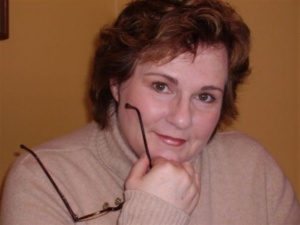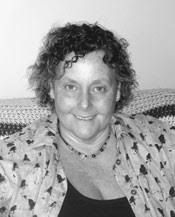http://www.winnipegreview.com/wp/2012/11/it-takes-a-village-as-applied-to-ya-fiction/
Posted: NOVEMBER 8, 2012
Columns, The Winnipeg Review
By Marsha Forchuk Skrypuch
I find it lonely being one of the few fiction writers who has tackled the lesser-known stories of World War II. The atrocities of Hitler are justifiably infamous, but a troubling number of people have never even heard of Stalin and his atrocities. Part of the reason for that is because you can’t tell your story if you’re dead, and Stalin managed to silence a whole heck of a lot of people.
In The Darkest Corner of the World (Dancing Cat Books), Urve Tamberg has managed to give voice to an entire small nation that was nearly obliterated in World War II. Well-researched and compellingly written, it deserves to be widely read.
Urve agreed to answer my questions for TWR.
The Darkest Corner of the World is set during WWII, yet the part of WWII history you deal with has received very little attention. Can you tell me about that?
Winston Churchill said that “history is written by the victors.” For most of the twentieth century, the Soviet Union was the “winner.” They illegally annexed the Baltic countries of Estonia, Latvia, and Lithuania during the Second World War, and for five decades the Iron Curtain limited communication between the West and the Eastern Bloc countries. Letters were censored, and people on both sides of the ocean were afraid to tell their stories.
After Estonia regained independence in 1991, stories slowly started to filter out, but even now there is very little written in English, much less written for a younger audience.
Another reason that Estonia’s stories have not been told is because of its tiny population. There are about 1.5 million Estonians in the world. Much of the literature to date has been written in Estonian, so fluency in the language has been a necessity.
This story is a personal one for you. Are any of the characters based on
family members?
The story is personal, but the characters are fictitious though I’ve tried to portray Estonian characteristics such as dark humour, sarcasm, and sheer stubbornness in the characters.
The setting on Hiiumaa Island takes place on my mother’s farm. When I was growing up, I thought Hiiumaa was a sleepy place where nothing interesting happened, but during the Second World War, the front passed through my mother’s farm twice, once in 1941 when the German Army drove the Soviets out of Estonia, and once in 1944 when the Soviets returned to occupy the country for the next fifty years.
Which character is most like you?
There is no one character I’d compare myself to. I’d like to think that, like Madli, I would’ve been brave, and smart, and defiant. But as a fifteen-year-old girl, could I have stood up to a Russian soldier? Could I have protected my little brother from the Soviet army? I know that I could do all that and more as a mother protecting my children, and I hope that I would have done the same as a teenager.
One doesn’t know how one would react under adversity until one is confronted with it. In researching the novel, stories of kindness came up time and time again, even in the most horrific of circumstances. For example, on the night of the deportations, when soldiers rounded up the families, some men told the deportees to bring warm winter clothes, sewing machines, and food since they knew that people were being sent to Siberia. Deportees were actually allowed to bring up to 100 Kg of supplies with them, but other soldiers gave people no time to pack, and literally forced people in their nightclothes to waiting trucks.
Do you believe in evil?
Yes, I believe people can be evil. If you believe people are good, then you must believe in the opposite as well. There is no other word than “evil’ to describe the actions of Stalin and Hitler.
Will there be a companion novel or sequel?
I’ve had a number of people ask me about a sequel, and I’ve started to research the next book.
My work-in-progress sheds light on another little-known story of World War II in the Baltics. In the late summer and early fall of 1944, over seventy thousand Estonians (along with thousands of Latvians, and Lithuanians) escaped to Sweden or Germany as the Red Army returned to occupy the Baltic countries. My parents were among those who left on small boats, and risked their lives to cross the stormy waters while Soviet planes patrolled overhead. Hundreds of people did not survive the hazardous journey.
What was your biggest challenge in writing this novel?
Since this is my first novel, there are three things that were challenging for me. I call them the three Rs — researching, rewriting, and relevancy.
As someone with no background in history, I had to research everything from the dates of major events to bathrooms, shoes, and bathing suit styles. Accuracy was very important because I felt that I had to honour the events and people of Estonia during that time period. My ability to read Estonian gave me access to a richness of work that wouldn’t be available to anyone who didn’t speak the language (needless to say, there aren’t many of us). I spend months reading life histories, and textbooks in both Estonian and English.
E.B. White said, “The best writing is rewriting.” I gave myself permission to use my first novel as a learning experience and spent years learning about the craft of writing. It was very tempting to rush the process, but it took about four or five years from conception to publication, and countless rewrites. I joined critique groups, SCBWI, CANSCAIP, and started going to courses and conferences. I love that I’m always learning something new, and that writers are so generous about sharing their experiences.
And finally, relevancy. How could I make this story appeal to teens? I knew the story had to draw them in on an emotional level and decided to included romance and betrayal. Also, Madli likes all the same things today’s teens do. Boys, summer vacation, parties, movies from America, and travelling. When I went to school, history was taught as a series of dates and treaties and wars and battles, none of which interested me in the least. Now I realize I’m interested in how people felt, and the every-day dilemmas they faced.
Did you ever feel like giving up? What made you continue?
I’m not the type to give up. So no, I didn’t think of giving up, but there were periods of lengthy procrastination, and navel gazing. Coming from a background of science and business, it’s hard to know if your writing will connect with people. The reason I persevered was due to the support of other writers, through associations such as SCBWI and CANSCAIP, as well as critique groups such as Kidcrit [Editorial note: Marsha Skrypuch has been running this free online critique group for sixteen years. To join, you must have a completed first draft of a children’s or YA manuscript. For permission to join, go here].
My critique partners helped me put my work into perspective. They praised the good parts, and offered gentle criticism for the sections that required work. I’m the type of individual who really wants to know how to improve, and am happy when there are many suggestions to consider.
This is your first novel. Can you tell me about your publishing journey?
I didn’t know I wanted to be a writer until a few years ago. I’ve always been an avid reader, and somewhere in the back of my mind, had the desire to write a novel. Like many people, I didn’t think writing would be as difficult as it was.
It took me four intense years of historical research, and learning writing craft before I submitted the manuscript for publication. I think the hours that I put in were probably the equivalent of another university degree, though the end result is a published novel, not a degree.
I could never have done this on my own. Like any profession, it’s important to connect with your peers. From the start, I have been part of amazingly supportive and perceptive critique groups. Organizations such as CANSCAIP and SCBWI provided important resources, and still do.
I met my editor, Barry Jowett from Dancing Cat Books, at a course run in Brantford (many Ontario writers would know that course was run by you). At a one-on-one meeting, he liked my first page, and wanted to see more. And based on some good advice, I didn’t rush to send him the manuscript. In fact, after much consideration, I ended up rewriting the whole novel from first person to third person before I sent it to him. That took a year. Fortunately, when I contacted him, he did remember the novel, asked to see the entire manuscript, and the rest is history.
What advice would you give an aspiring writer?
They say it takes a village to raise a child. It also takes a village to write and publish a novel so my advice would go something like this:
First— congratulations! You’re the prospective parent of a manuscript! The manuscript may have as few as five hundred words if it’s a picture book, or sixty-thousand words if it’s a young adult novel. You have an embryo of an idea, and want to nurture it to life. Gestation could take months, or even years. During that time, you’ll want to talk to other parents/writers, compare progress, and read as much as possible about care and feeding of your new manuscript. And when you need a break from that, reach for a good book.
During the time of manuscript gestation, you’ll get lots of questions, and perhaps even receive unsolicited advice from well-meaning people who are not writers. Why is this manuscript taking so long? Will it be published by Christmas? Do what any expecting parent usually does; smile knowingly and mumble “As long as it’s healthy.”
Hang around with experienced parents, i.e. people who have written books and had them published. In other words, find your writing tribe. Join associations, whether it’s SCBWI and CANSCAIP for children’s writers, or other groups for mystery writers, or romance writers, or sci-fi writers. Learn the craft of writing. We learn science, piano, and other skills. Writing is a skill that can be learned through courses, workshops, and reading books about writing.
Find trustworthy caretakers i.e. find a critique group. Find those people who you can trust to read your work, and offer suggestions for improvement. These people will cheer you on, and keep you motivated. Find people whose aspirations are in line with your own. Although writing may be solitary work, getting a manuscript to publication takes a village





